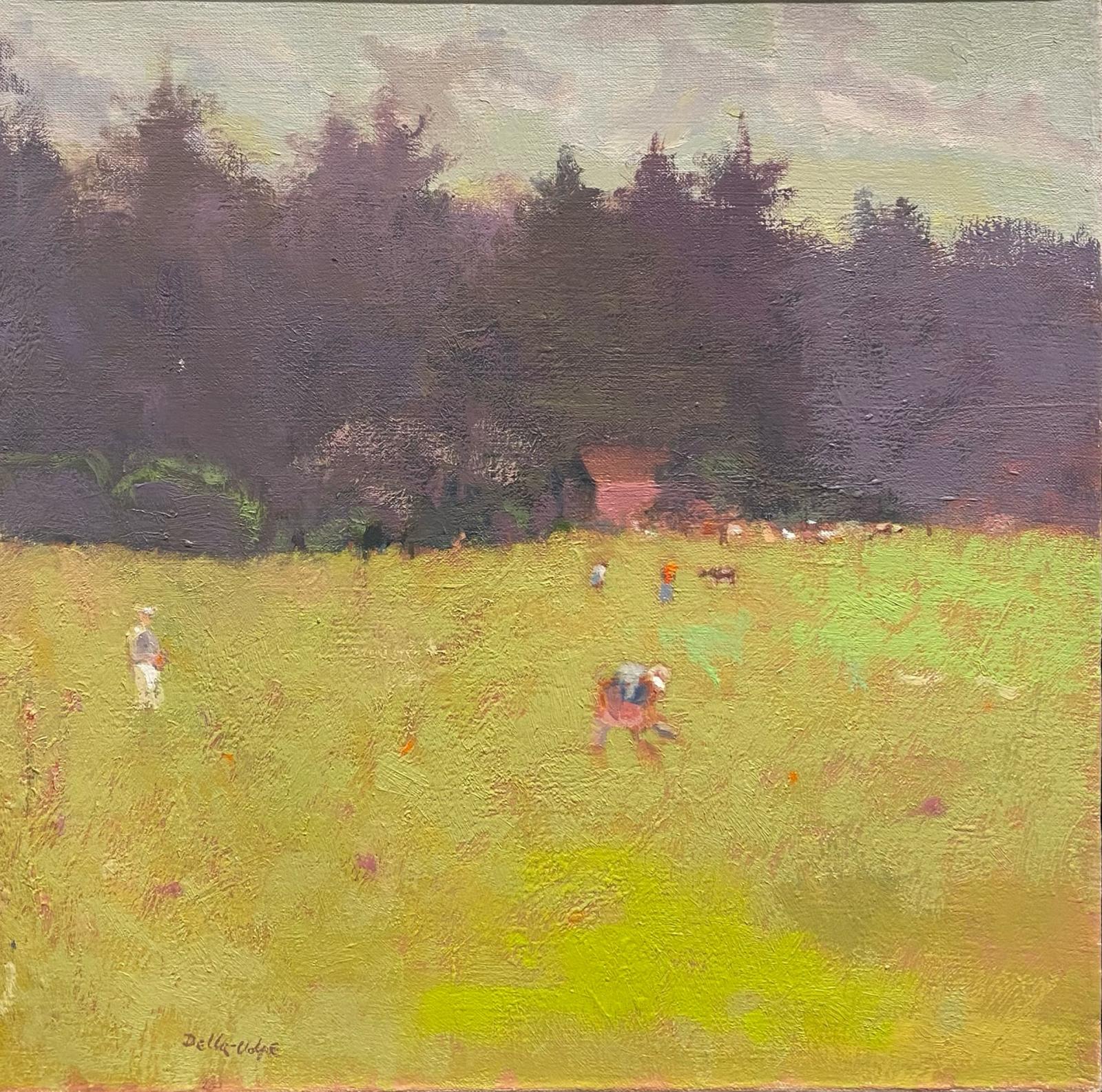







Framed: 21 x 21 inches
artist
Ralph Eugene Della-Volpe's semi-abstract paintings of often simplified beach scenes and anonymous portraits "convey profound awareness of mood and character", and his paintings are hardly as literal as they may first appear (Arts Magazine. "New York Exhibitions". 1965). Constantly transforming what is on the canvas, the artist is never sure himself of the final composition of each work until completion because, as he says, "Everything I paint is based on my own feelings about life, my own insights, my own observations and my own needs for expression."
Della-Volpe first studied painting at the National Academy of Design before joining the Army during World War II. As a soldier, the artist saw action on Utah Beach, and his experiences undoubtedly affected his later artistic style. Tom Wolf, of Bard College, explained that the paintings Della-Volpe produced after his return from service in World War II "project feelings of melancholy." expressed in the tense expressions in the figures' faces. The "coloristic exuberance" found in the works beginning in the mid 1960's, with their vibrant fuscias and yellows, seem to offset what could be an otherwise solemn tone to many of his works at the time.
Upon his return from military service, Della-Volpe took a teaching position as the first artist-in-residence at Bennett College in Millbrook, New York where he remained for 28 years, serving as chairman of the Art Department for most of that time. Obviously influenced by impressionism's preoccupation with the treatment of light, Della-Volpe's own works have a "faultless tonal quality, with its sense of failing light—the areas of silvery gray deepening into rosy tans" (Arts Magazine. "In the Galleries". 1960). The simplified scenes and portraits express the artist's love of open space and his aim to evoke emotion through each piece rather than recognition of what exactly is painted on the canvas. Della-Volpe has exhibited widely throughout his career and has lectured on art at colleges, universities, and galleries across the country.
Description
Field by Ralph Dell-Volpe is a small work that appeals and speaks volumes. The light green of field set against the dusky purple shadows of the distant woods reads well and unconsciously divides the canvas into bands of color fields. The dashes and dots with which Della-Volpe distinguishes the animals and figures is endearing and playful. This could be anywhere, but Della-Volpe painted greatly from his surroundings in Millbrook, New York which is known as horse and farm country. He utilized an interesting technique in this painting, putting a reddish pink field of color underneath the green. In fact, he has built up this scene by layering in color, no hard lines just blended strokes that create texture and fields of modulated color. Della-Volpe was a fine artist who had a firm style that was all his own. Color and often he would add “rhythm were his drivers. The use of purple in the distant woods is a common technique employed by the impressionists. Della-Volpe used this color extensively in his work along with pink and high-keyed tones like the green. His works tend to feel familiar and speak of family and places we feel we know.
provenance
Private Collection Mr And Mrs MacAllister, Greenwich, CT







